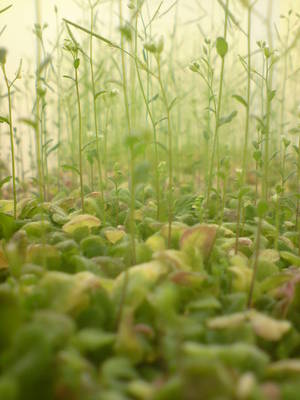Changes to DNA can occur by genetic spelling mistakes, altering the sequence of the code, or epigenetic changes.
Epigenetic changes, from the Greek 'to stand on a gene', occ ur by sticking extra information onto DNA, a bit like a molecular post-it note. These post-it notes however can be maintained and stably inherited, and are much more common than was previously thought.
ur by sticking extra information onto DNA, a bit like a molecular post-it note. These post-it notes however can be maintained and stably inherited, and are much more common than was previously thought.
Professor Joseph Ecker and colleges from the Salk Institute for Biological Studies found more than 114,000 epigenetic changes, methylation events, compared to just 90 genetic changes when looking at plants over 30 generations. These apparently small epigenetic alterations can make large changes to gene expression, with genes being translated 1000 times more or less depending on their methylation status.
Epigenetic changes are also found in humans, and work is being done on how epigenetics relates to phenotype - how the organism looks - and if it helps adaptation in stressful environments.
The gene FWA highlights how important epigenetics can be. When comparing two genetically similar plants, where one had lost its epigenetic silencing of FWA so that it was active in leaves, you could see a difference in flowering time. The epigenetics had caused the plant to flower later than normal. This represents a visible change in phenotype caused by epigenetics rather than gene mutation.
The difficulty with studying epigenetics is teasing apart which changes are due to DNA mutation and which are caused by epigenetic variation. A set of plants was already available with information about the occurrence of genetic mutations over 30 generations, so Jo Ecker and his team used these plants to examine the amount of naturally occurring DNA methylation and how much spontaneous methylation occurred over the generations. This allowed them to track changes and make comparisons between the two types of DNA alteration. They found that methylation was five times more likely to occur than genetic mutation.
Although mutation over time may convert epigenetic mutations into genetic mutations, in the short term they are able to alter gene expression in a stable manner that is easier to reverse and so could give more adaptive flexibility and immediate control.
Carrie-Ann Whittle and colleges have already carried out work looking at this adaptive advantage. They have shown that growing plants in a hot environment will lead to epigenetic changes. These changes can be seen in subsequent generations that are fitter and produce five times more seed in hotter temperatures compared to non-heat treated plants. It would be interesting to see whether the rate of epigenetic formation is faster in more challenging environments.
Increasing our understanding about the effect of epigenetics will develop an important toolbox for plant breeders. A large aspect of unexplained variation between crop lines, which appear genetically similar, is probably due to methylation. Knowing more will help breeders make informed decisions about the best ways to cross their plants and make the most of the genetic resources available to deal with environmental challenges.
- Previous Beetle Antimicrobial peptides
- Next Water in Another Solar System










Comments
Add a comment